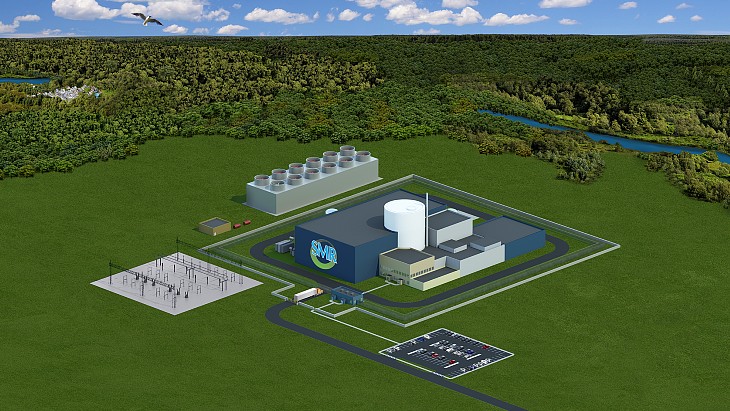The US company said it has been encouraged by the US government's "supportive posture" including the recent passage of the Inflation Reduction Act, which it said will "turbocharge the rise of nuclear energy in the US". It envisages its SMR-160 advanced reactor, coupled with its clean energy storage and generation (CESG) technology, as the centrepiece of a "distributed clean-energy ecosystem".
Holtec recently submitted an application for a USD7.4 billion federal loan to enable it to increase capacity for SMR production at its existing manufacturing facilities, to construct and operate four SMR-160s in the USA and to build a new Holtec Heavy Industries (HHI) complex for higher capacity manufacturing of components and modules for SMR-160s. It is still evaluating the location of HHI, but said the proposed mega-plant would likely be close to the site of its first US SMR-160.
Numerous candidate sites are being considered for the first SMR-160, Holtec said. These include the former Oyster Creek nuclear power plant site, for which work is already under way on the site-specific plant layouts and environmental monitoring that will be needed to support an application for a construction permit. Holtec took over ownership of the New Jersey plant for decommissioning in 2019 following Exelon's closure of the of the single-unit boiling water reactor unit the previous year.
Other nuclear decommissioning sites owned by the company, as well as "nuclear, coal and greenfield sites", are also being considered, Holtec said.
The SMR-160 is a pressurised light-water reactor, generating 160 MWe (525 MWt) using commercially available low-enriched uranium fuel, with flexibility to produce process heat for industrial applications and hydrogen production. Holtec finalised an agreement with Hyundai in 2021 for the turnkey supply of the SMR-160 worldwide. The company envisages pairing an SMR-160 plant with a its Green Boiler CESG system to store surplus energy from the power plant itself and from the general grid, which can then be used in periods of generation deficit. A variation of the CESG system called HI-HEAT has been engineered to provide district heating systems.






_91467.jpg)
_47120.jpg)
_16439.jpg)





